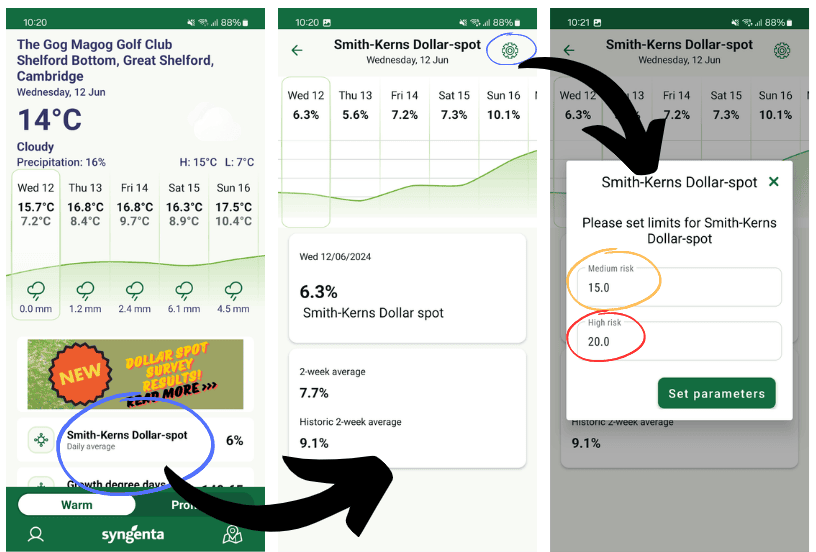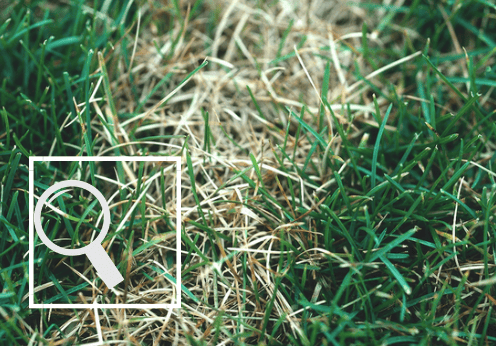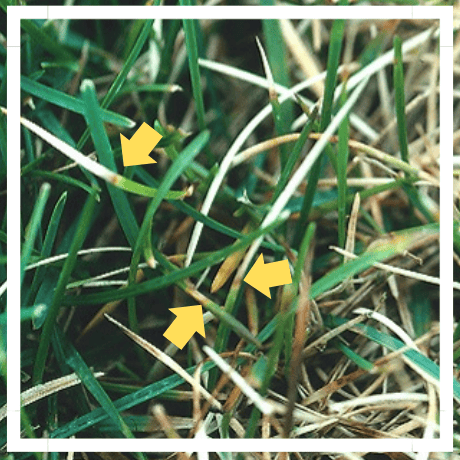As we know dollar spot disease pressure is primarily driven be warm temperatures and high humidity.
The cool conditions and lower humidity have been keeping most surfaces in the UK & Ireland clear of dollar spot up to now.
BUT … Temperatures are gradually beginning to raise to levels which will allow dollar spot to develop and humidity looks to be moving up also.
The best way to keep on top of changing dollar spot disease pressure is using the Smith-Kerns dollar spot model.
Many are already using the module dedicated to this in the free Turf Advisor app.
Haven’t got the app? Download it for free here.
Add the « Smith-Kerns dollar spot » model to the top of your dashboard if you’ve had issues before or are concerned.
Set up thresholds to help you track the pressure at a glance as outlined below.

Once set, pressures above your « Medium risk » will show in orange and « High risk » in red on your dashboard to warn you.
When you see disease pressure, presented as a % creeping towards 20% (or the ‘% action threshold’ you’ve identified for your site) you would be considering actions; like additional rolling or nutrition, both of which have been shown to reduce disease incidence at low/medium disease pressures.
Or looking to a preventive application of a proven fungicide on dollar spot, like Ascernity.
I ran user trials on dollar spot last year and have some running again in 2024.
2023 was a fairly bad year for dollar spot incidence, with the first attacks coming early on and being severe through the summer.
Rain & dollar spot?
I recently wrote a blog on rainfall, which got me wondering whether a wet year is going to drive more dollar spot disease?
The jury is still out on this one, as we need a level of temperature along with the moisture.
With some diseases like Microdochium patch and in other plants – powdery mildew, regular rain events can reduce disease incidence by knocking down spores and mycelium off the leaf.
We don’t know if this is the case for dollar spot.
My gut feeling is that a wet year, which 2024 is looking to be so far, leads to more dollar spot issues.
More rainfall generally means a few things, which are known to help dollar spot thrive:
- Rainfall can help push up humidity
- Regular rainfall can mean we don’t get all the goodness from fertility – more is lost through leaching
- Adequate supply of water leads to higher clipping yields – meaning more nitrogen is lost from the plant
Anecdotally I saw more red thread disease last year (a disease strongly linked to lower fertility levels) more rainfall having led to reduced available fertility in real terms (leaching & rampant growth lost as clippings being removed).
To see the dollar spot user trials blog from last year tap here.
Identification
My top tips for dollar spot ID would be:
- Look out for mycelium early on dewy mornings over active disease patches.
- Look for a darker brown band between the dead straw coloured bleached area, and the live green area of a leaf blade (see below).

Zoomed in closer you can just pick out the dark brown bands on the leaf blades of actively infected turf (easier to see with the grass in your hand).

What’s the plan now?
My take away would be keep a close eye on the numbers and on the course for early signs of disease from now on, we are well into the period where we can see dollar spot jump out at us.


